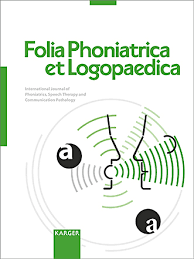| Authors | Simon Judge Susan Baxter, Pam Enderby, Philippa Evans |
|---|---|
| Journal | Folia Phoniatrica et Logopaedica, October 2012 |
| DOI | http://www.karger.com/Article/Abstract/338250 |
| External | Download Paper Publication |

| Authors | Simon Judge Susan Baxter, Pam Enderby, Philippa Evans |
|---|---|
| Journal | Folia Phoniatrica et Logopaedica, October 2012 |
| DOI | http://www.karger.com/Article/Abstract/338250 |
| External | Download Paper Publication |

Methods: Electronic databases were searched from 2000 to 2010, together with reference lists of included papers and review papers. The review considered work of any design which reported an intervention using high-tech AAC with people who have communication difficulties (excluding those with solely hearing or visual loss) published in peer-reviewed journals.
Results: Sixty-five papers reporting interventions using high-tech AAC were identified. There was evidence that high-technology AAC may be beneficial across a range of diagnoses and ages. The evidence, however, is currently drawn from studies using designs considered to be at high risk of bias.
Conclusion: The review suggests that the high level of individual variation in outcome requires a greater understanding of characteristics of clients who may or may not benefit from this technology. Also, the wide range of outcomes measured requires further work in the field to establish what a ‘good outcome’ from intervention may be.